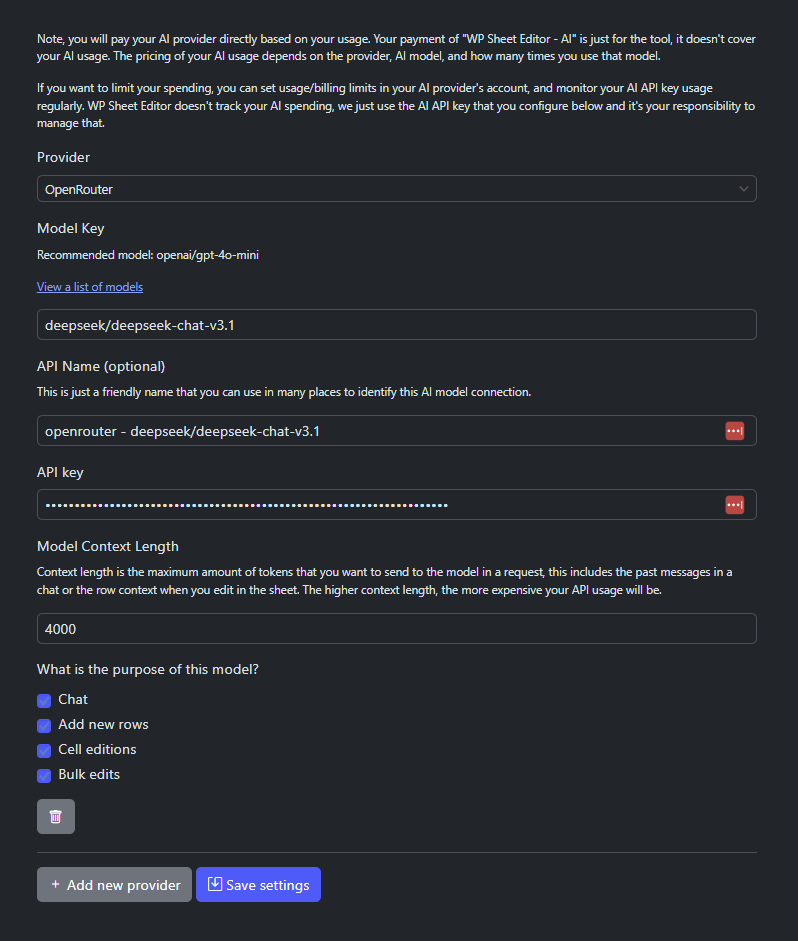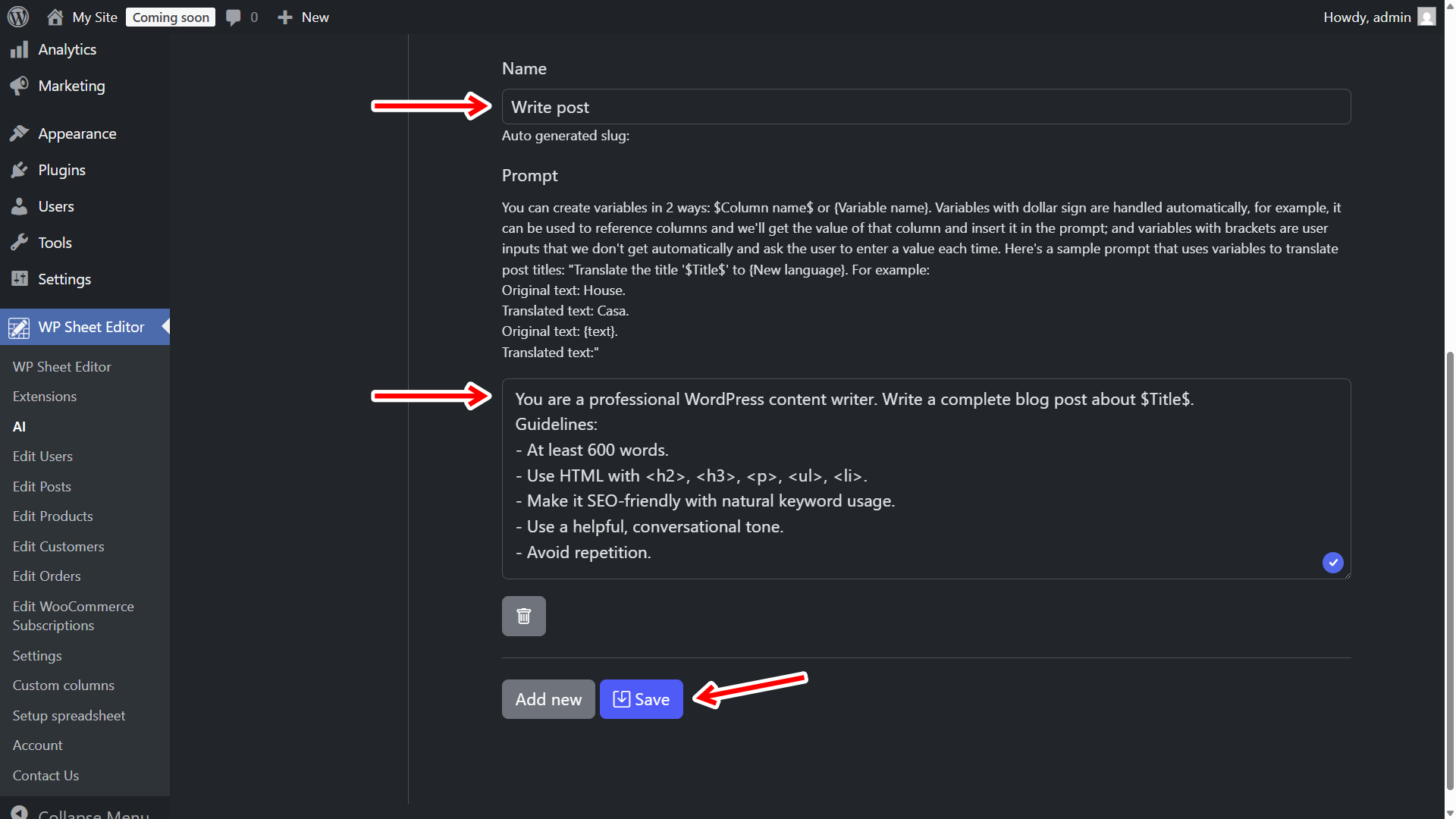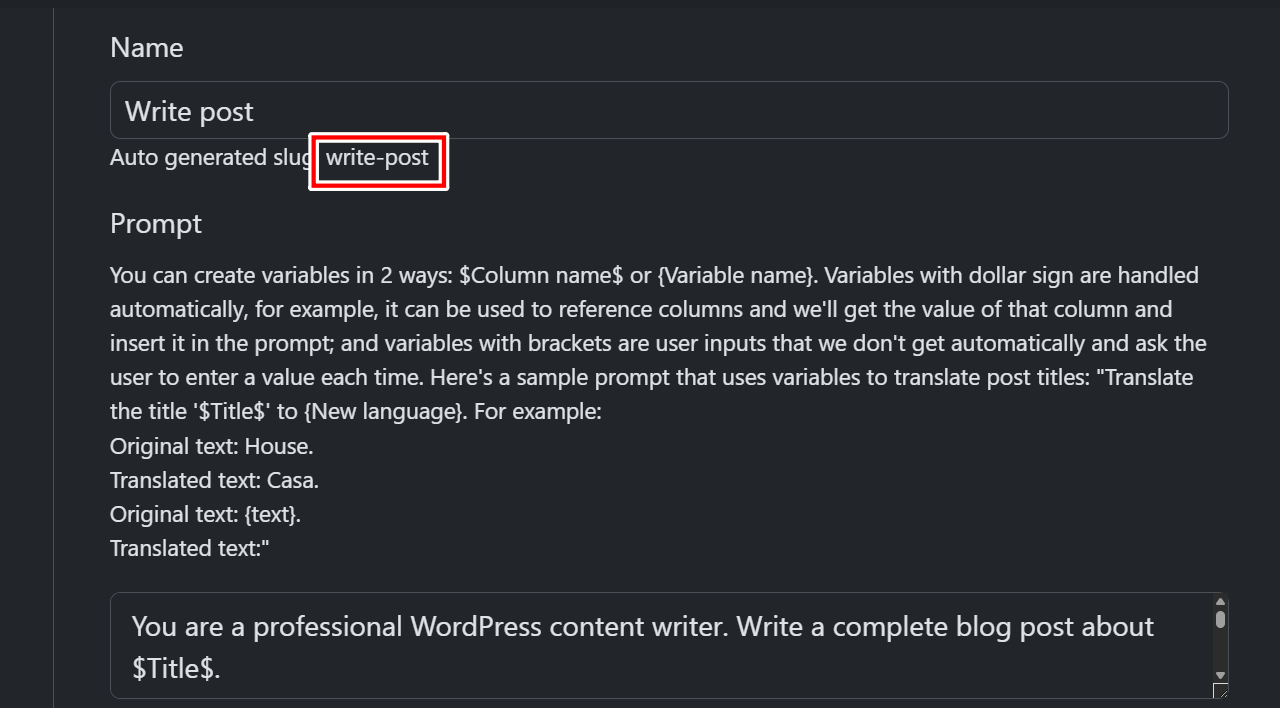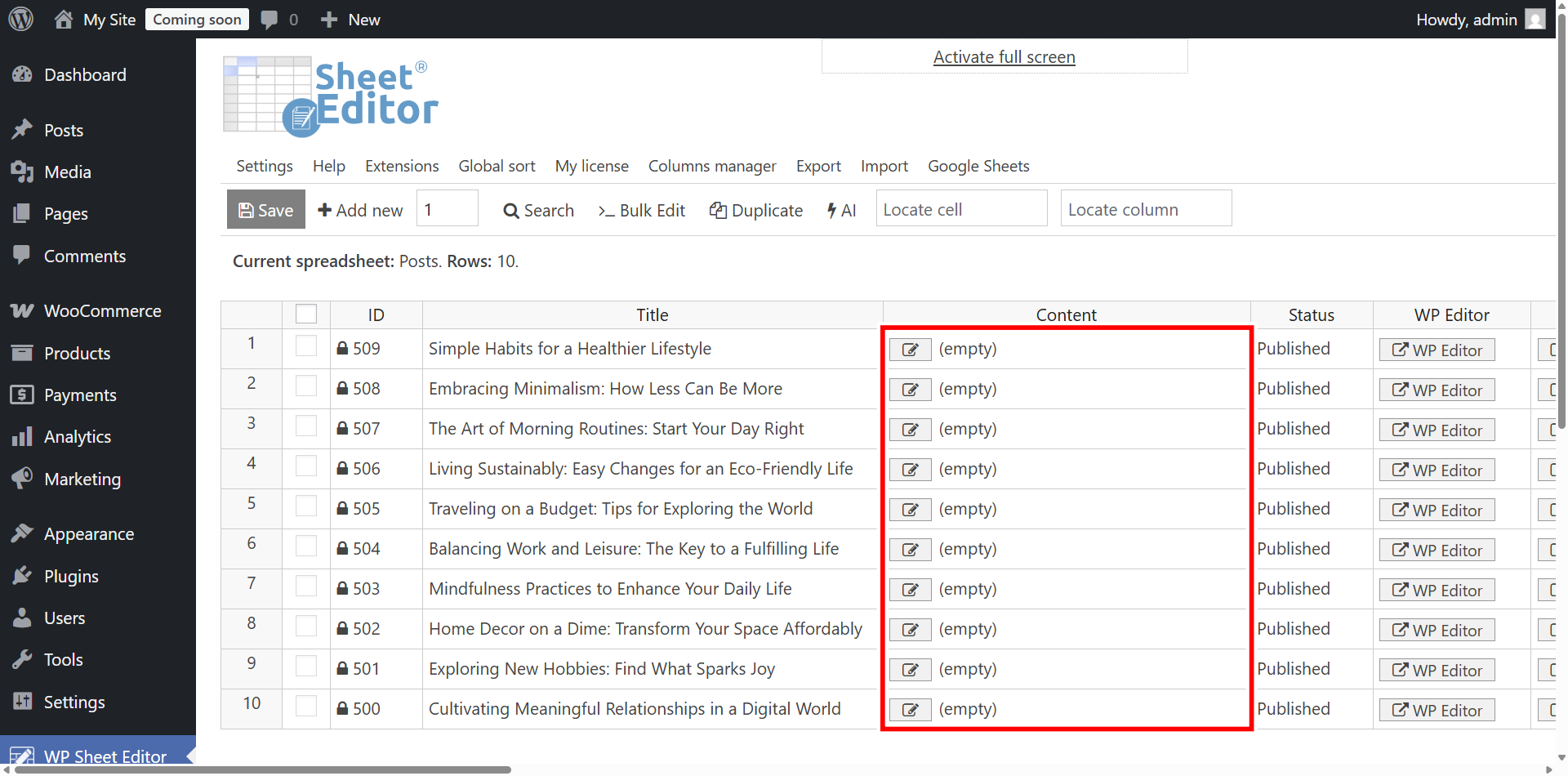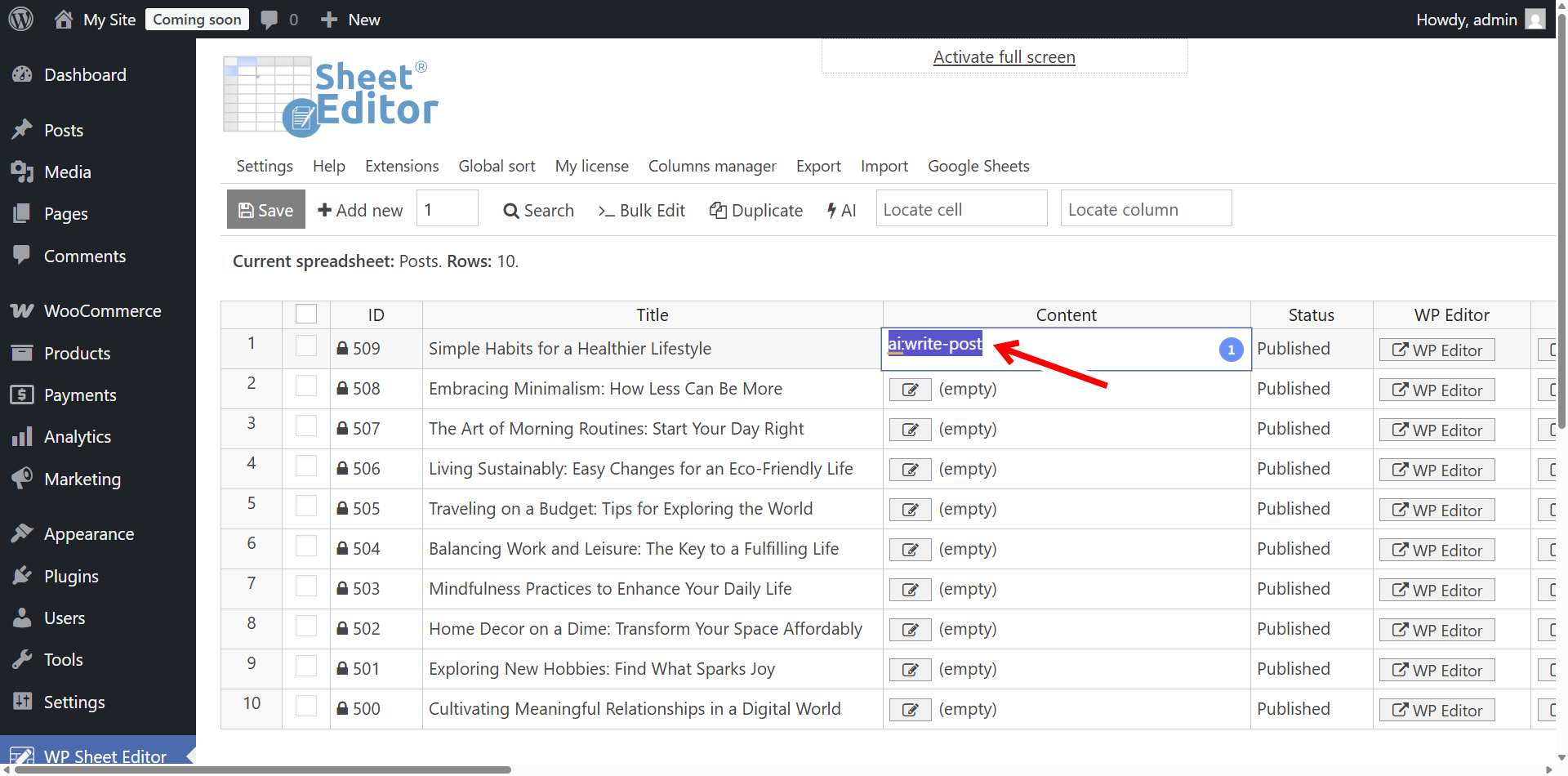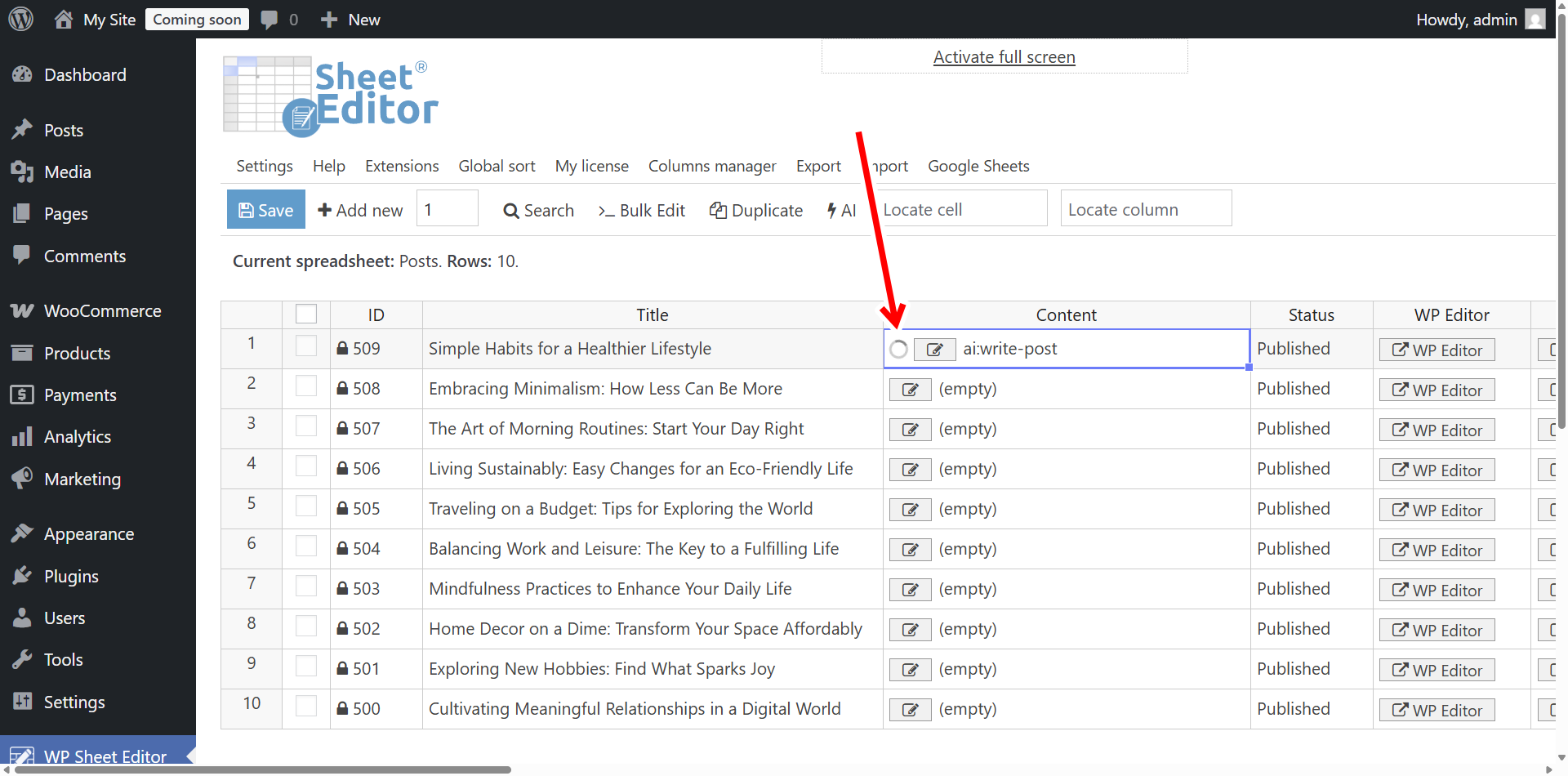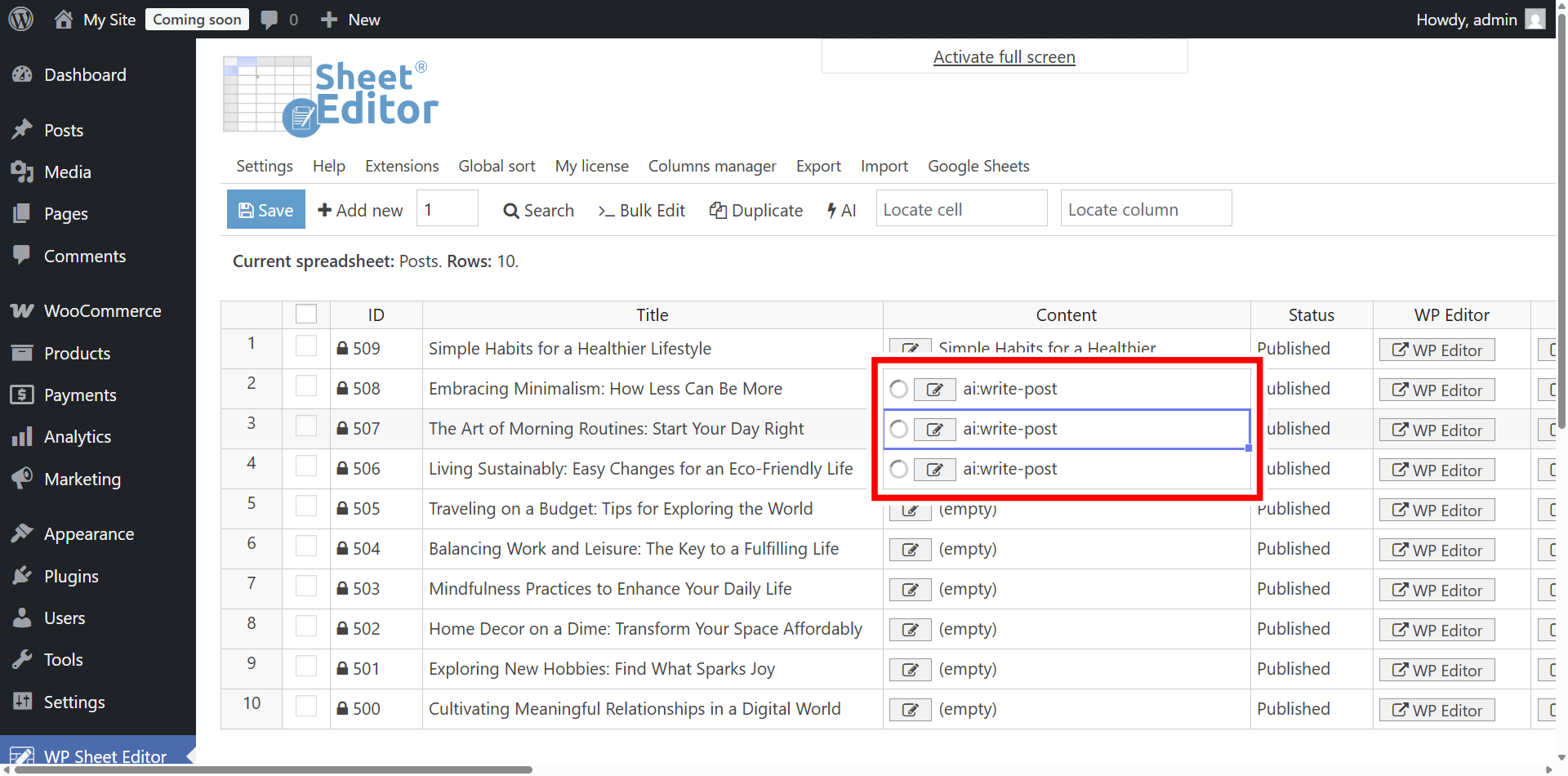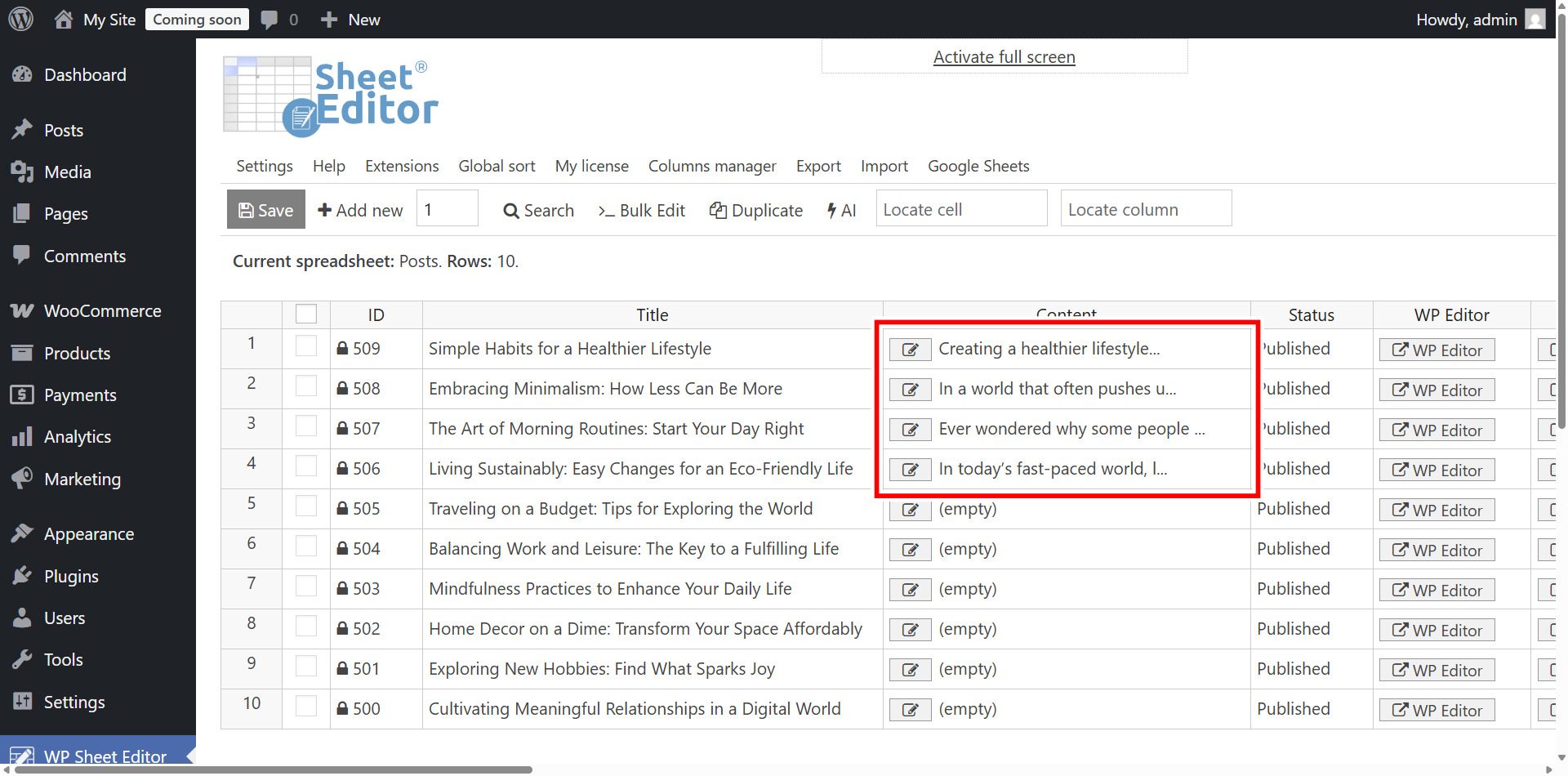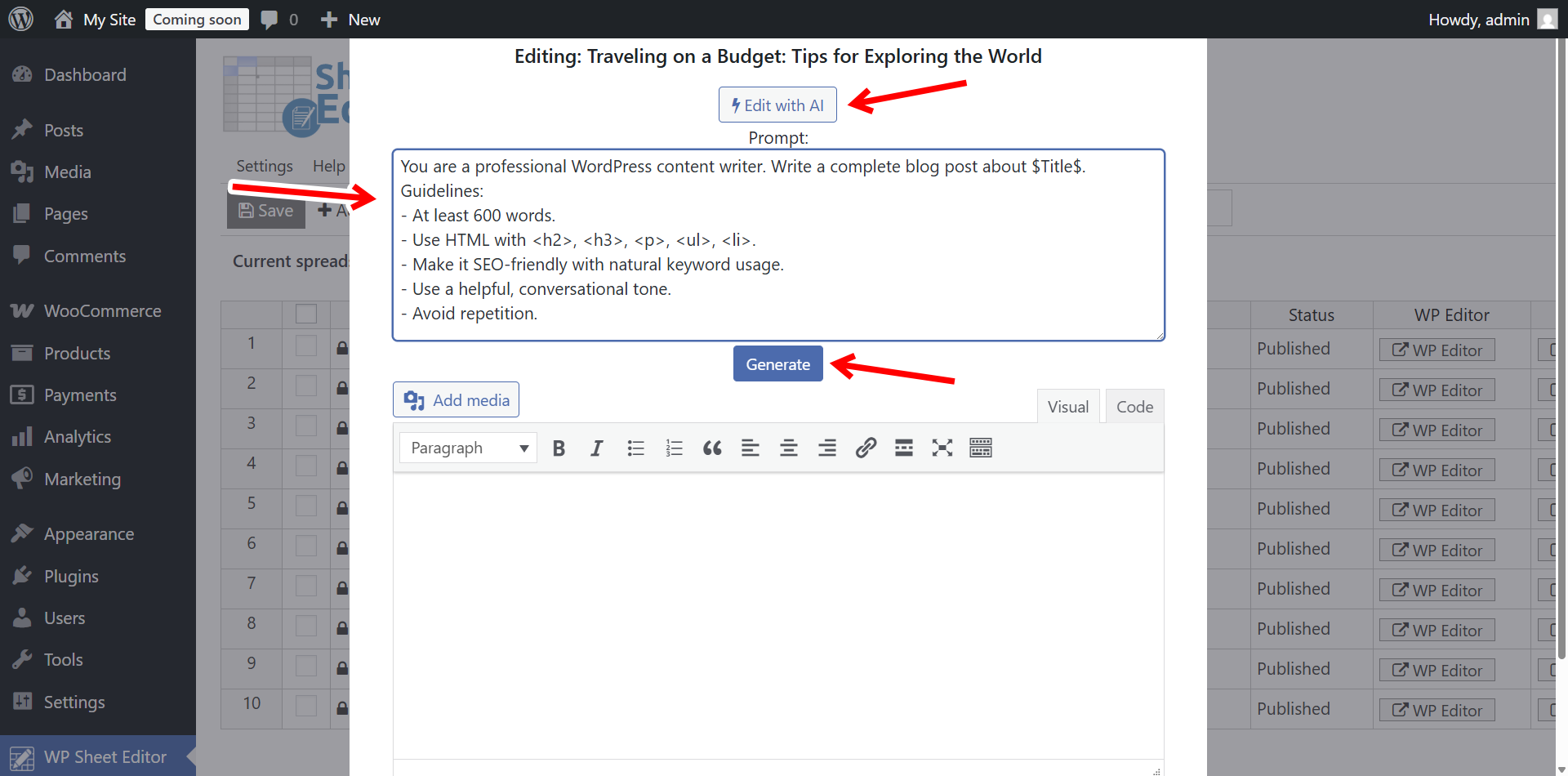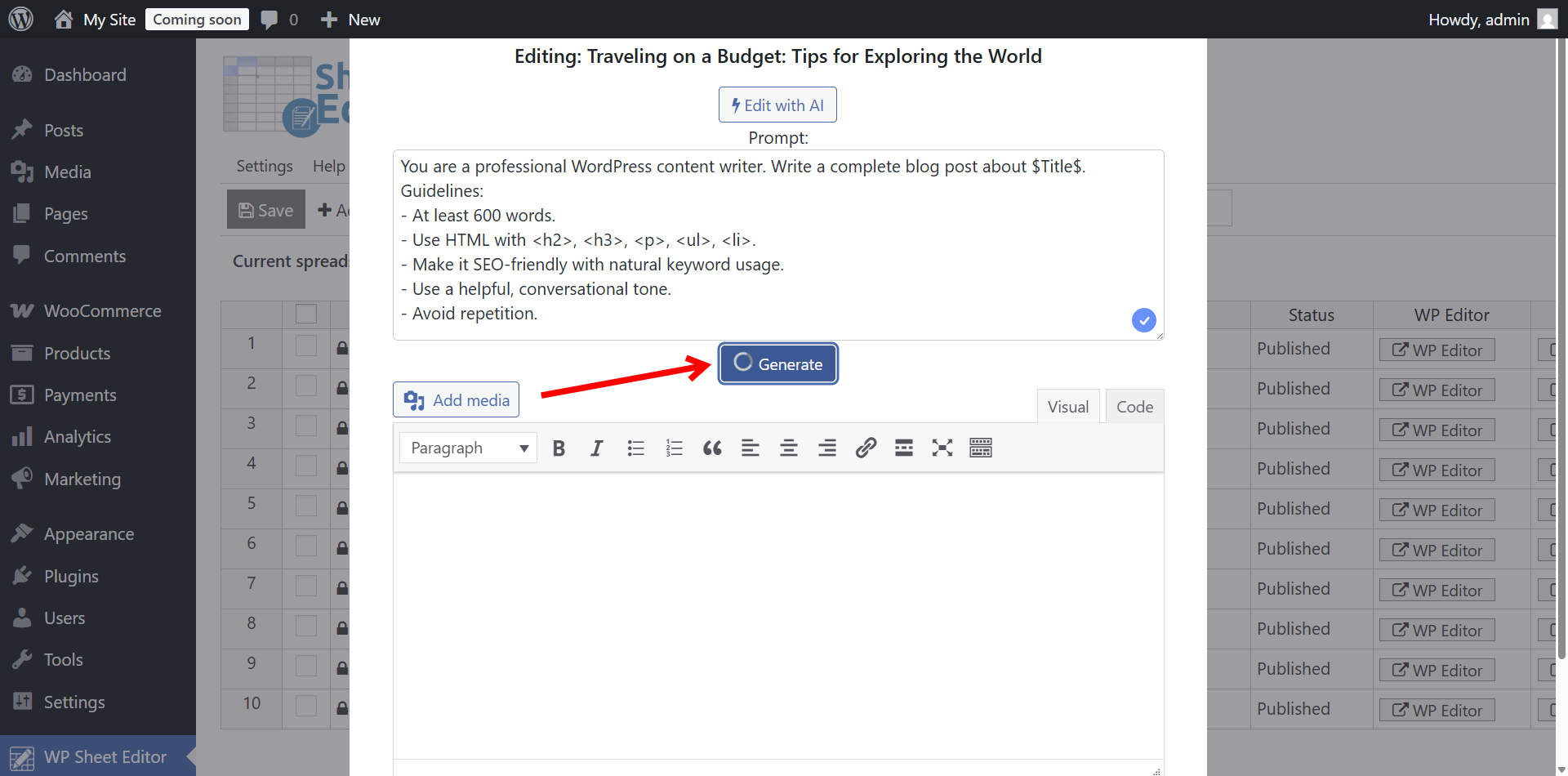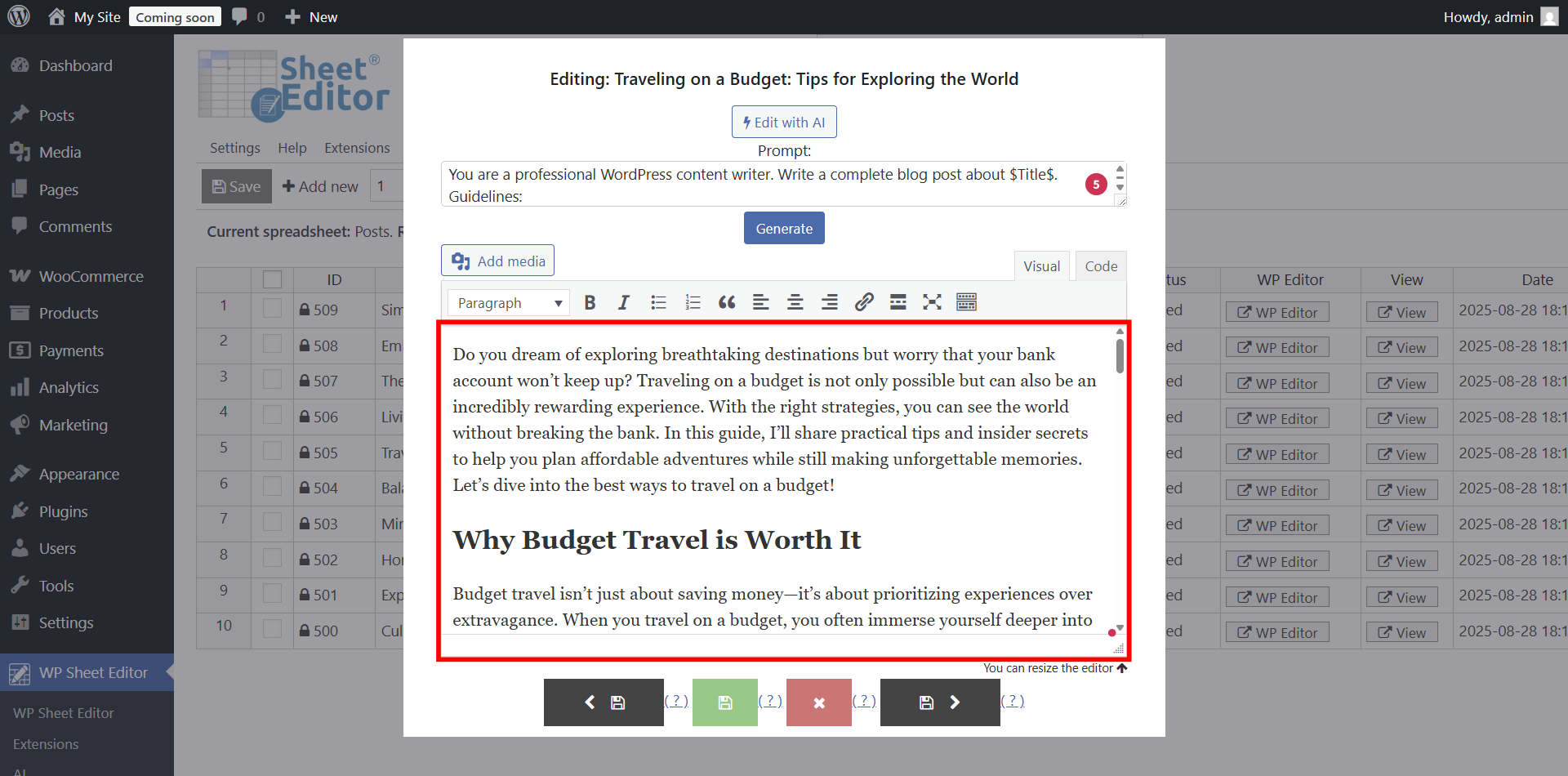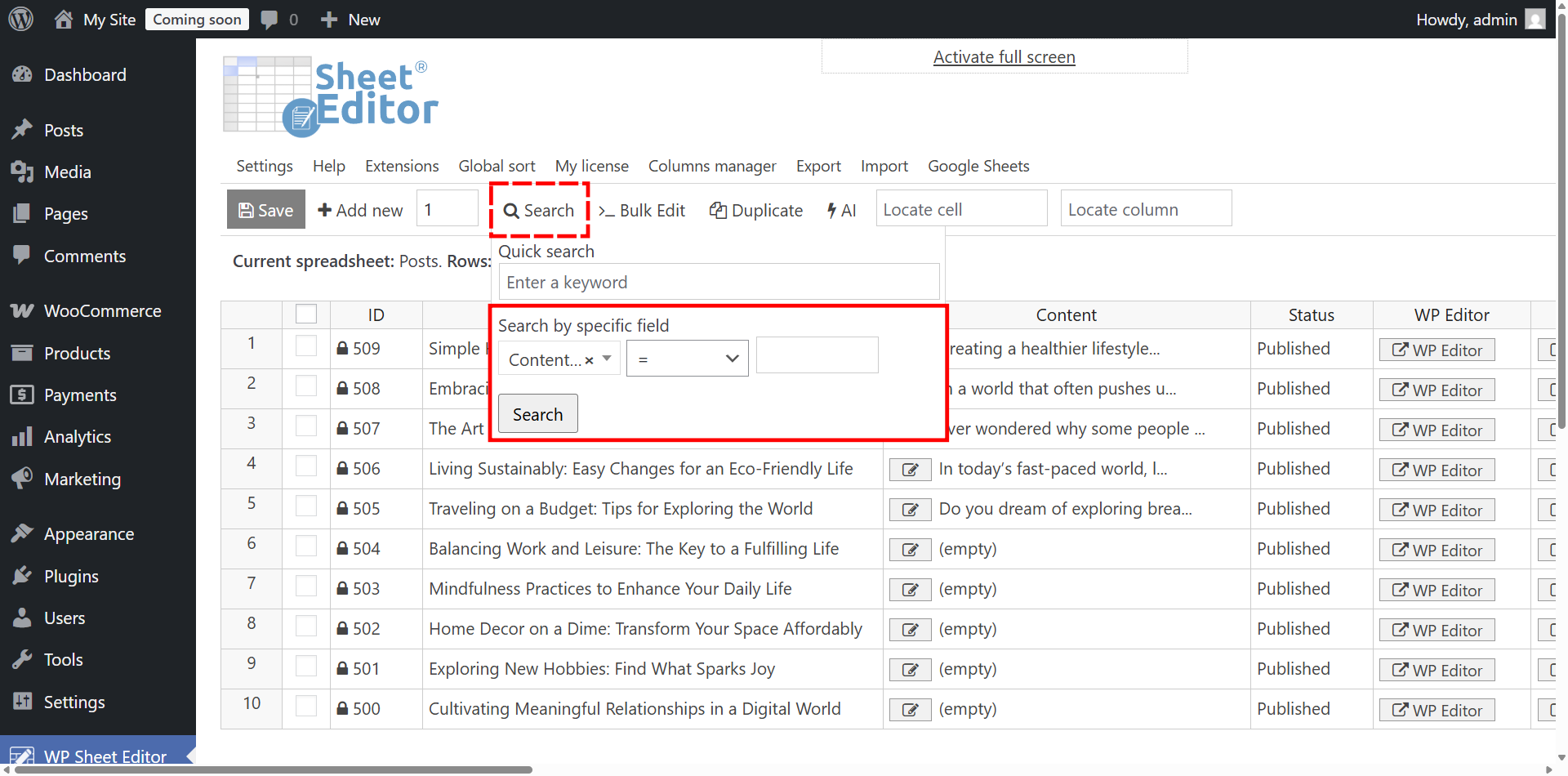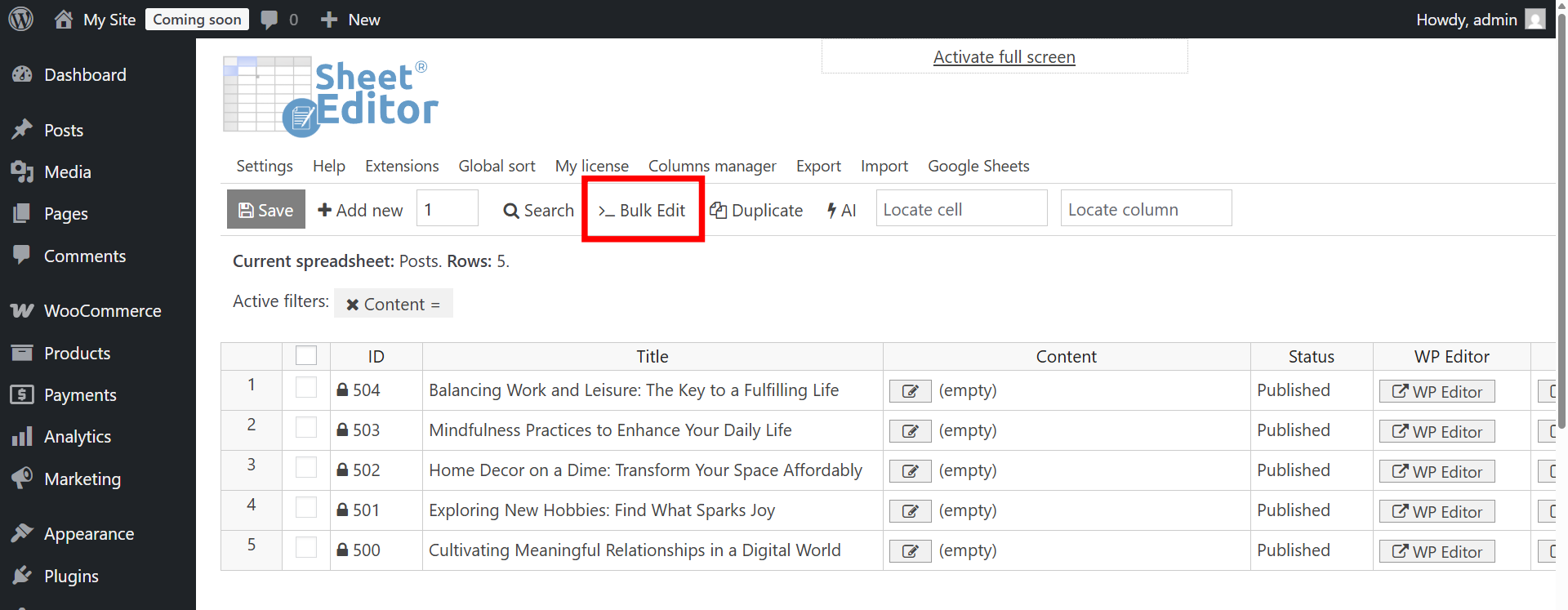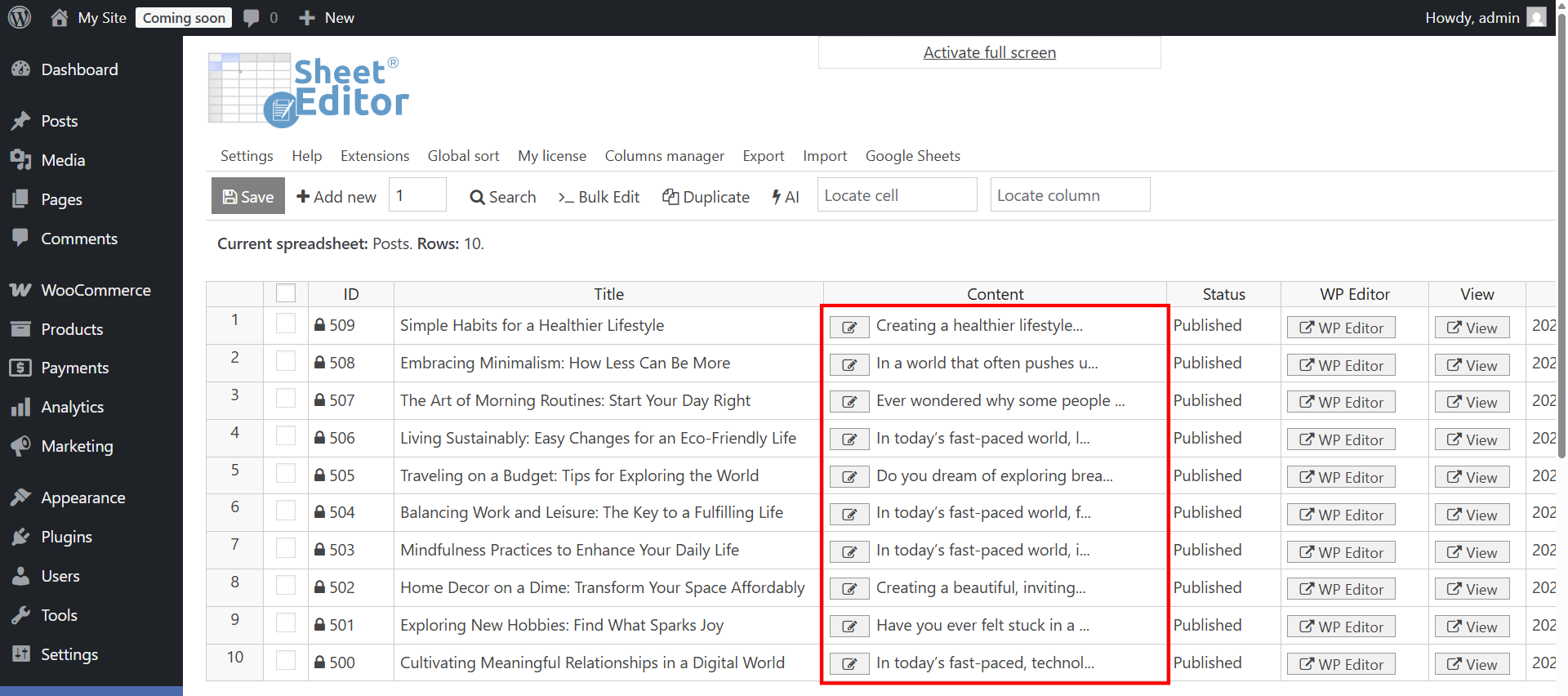Want a faster way to keep your WordPress blog full of fresh content? In this guide, we’ll show you how to use DeepSeek LLM to automatically generate posts inside WordPress using WP Sheet Editor – AI.
Producing regular content is the lifeblood of SEO and audience growth. But let’s be honest: writing articles week after week is exhausting. Freelancers are expensive, in-house writers take time, and many site owners end up with half-written drafts that never get published.
This is where DeepSeek AI comes in. By connecting it to WP Sheet Editor – AI, you can scale your publishing without scaling your workload. You provide titles, and DeepSeek generates complete, structured, SEO-friendly posts directly in your WordPress database. In minutes, you can turn empty drafts into a fully stocked content calendar.
Table of Contents
What you need to generate WordPress posts with DeepSeek
Before we dive into prompts and content generation, let’s make sure we have the right setup. WP Sheet Editor provides the spreadsheet view, and the AI add-on connects WordPress to DeepSeek.
1- WP Sheet Editor – Post Types
This plugin gives you a spreadsheet interface for posts, pages, or any custom post type. You’ll use it to open your draft posts, manage titles, and let DeepSeek fill in the Content column automatically.
You can download the plugin here:
Download Posts, Pages, and Custom Post Types Spreadsheet Plugin - or - Check the features
2- WP Sheet Editor – AI
WP Sheet Editor – AI is the bridge between your WordPress site and advanced AI providers. It works with OpenAI, Anthropic, xAI, DeepSeek, and others through OpenRouter. You can run AI prompts directly in the spreadsheet or in bulk.
You can sign up here:
Sign up to the WP Sheet Editor - AI Service - or - Check the features
3- DeepSeek LLM via OpenRouter
We’ll be using DeepSeek through OpenRouter. Once connected, you can select DeepSeek as your model and start generating posts.
Follow this setup guide to connect WP Sheet Editor to OpenRouter and start using DeepSeek LLM or follow this quick guide:
- Go to WP Sheet Editor > AI > Settings.
- Provider: We will use Openrouter in this example.
- Model Key: We will use DeepSeek v. 3.1, so we need to enter this key:
deepseek/deepseek-chat-v3.1 - API Name: openrouter – deepseek/deepseek-chat-v3.1
- API Key: Paste your OpenRouter API key.
- Select context length and the purpose of this model (Chat, Add new rows, Cell editions, Bulk edit).
- Click on Save settings.
Step 1. Write a prompt that guides DeepSeek
DeepSeek generates content based on the instructions you provide. That’s why prompts are so powerful: they set the tone, length, and structure of your blog posts.
Here’s a sample prompt tailored for WordPress posts:
You are an expert blog writer. Write a full article about $Title$. Guidelines: - At least 700 words - Use HTML with <h2>, <h3>, <p>, <ul>, <li> - SEO-optimized with natural keyword usage - Friendly, engaging tone - Add a clear conclusion - Include a short FAQ section at the end - Return the post content only, starting with a normal paragraph as introduction.
This ensures your posts are not just long enough, but also well-structured and reader-friendly. You can customize the prompt further; for example, ask for “Write in a persuasive marketing style” or “Make it a storytelling format.”
Step 2. Save the prompt as a reusable command
Instead of pasting the same text every time, save it as a global prompt in WP Sheet Editor. This way, you can trigger it with an easy shortcut.
- Go to WP Sheet Editor > AI > Settings > Prompts.
- Click Add new and give it a name, e.g., “Write post.”
- Paste the prompt into the editor.
- Click Save.
WP Sheet Editor will create a slug, for example
write-post
.
Now, inside your spreadsheet, you can simply write:
ai:write-post
And the AI will start generating post content based on the post title.
Step 3. Generate posts with DeepSeek
Once your prompt is ready, it’s time to ask DeepSeeik AI to write our WordPress posts. The Content column is where the writing goes, and DeepSeek can generate articles directly from there.
Note. We have already created the entries with the title of the posts, so we will reference the title so that DeepSeek can write the content of the post. We have posts with empty content.
Option 1: Generate posts directly in the spreadsheet
If you want to test a prompt or create articles one by one, this is the simplest way:
- Go to WP Sheet Editor > Edit Posts.
- In the Content column, type:
ai:write-post
- Press Enter and watch DeepSeek generate a full article based on the post title.
While DeepSeek is busy writing your blog posts, you’ll see a loading icon in the spreadsheet cell.
You can see that DeepSeek has written our post content! We’ve generated our first post.
PRO TIP: You can create the prompt shortcut in multiple cells to generate content with generative AI in several posts simultaneously.
We just a few clicks and by pasting a simple prompt shortcut, we have generated content for 4 WordPress posts using DeepSeek AI.
Option 2: Write posts in the text editor
For more control over each post, you can use the built-in AI editor:
- Click Edit in the Content column.
- Hit Edit with AI in the text editor popup.
- Enter the full prompt or use prompt shortcut.
- Click Generate.
You’ll see a loading icon in the Generate button while DeepSeek writes your blog post content.
Now you can use the text editor to tweak and polish the post before publishing it on your blog.
Option 3: Bulk-generate posts with DeepSeek
If you have many drafts waiting for content, bulk editing is the fastest way to fill them all at once.
Our Bulk AI API allows you to bulk generate or edit WordPress content with AI in WP Sheet Editor.
First, filter your spreadsheet to show only posts where Content = Empty.
Second, open the Bulk Edit tool.
Third, select these values to bulk write WordPress posts with DeepSeek LLM.
- Select the rows that you want to update: Edit all rows from my current search
- What field do you want to edit: Content
- Select type of edit: AI command : Write post
- AI Provider: Select your favorite provider; we will use DeepSeek in this example.
- Click Execute Now.
DeepSeek will process all the drafts and generate unique, structured posts for each title in one go.
Step 4. Review and optimize your generated posts
Once DeepSeek creates your blog posts, you can optimize your posts:
- Review and refine the content to add your unique brand voice.
- Insert images, videos, or embeds to boost engagement.
- Use AI again to polish or generate SEO titles and meta descriptions.
- Schedule the posts to maintain a steady publishing flow.
Frequently Asked Questions
Does DeepSeek generate different results every time?
Yes. Even with similar titles, DeepSeek will produce unique variations thanks to its natural language generation capabilities.
Can I ask DeepSeek to expand drafts I already have?
Absolutely. Just adjust your prompt to say “Expand and improve the existing content” and DeepSeek will build on what you’ve started.
Is the output good for SEO?
DeepSeek structures posts with headings, lists, and natural keyword flow. With a solid prompt and some light optimization, the posts are fully SEO-ready.
Do I need to pay separately for AI tokens?
Yes. The WP Sheet Editor – AI service connects your WordPress site to external AI providers, but the actual text generation happens on the provider’s side (OpenAI, OpenRouter, DeepSeek, xAI, etc.).
This means you’ll need an active account with your chosen provider and enough credits or tokens to run your prompts. Token usage depends on factors like article length, model type, and formatting. For example, generating a 600–800 word blog post usually costs just a few cents, but you should always monitor your provider’s dashboard to track usage and expenses.
In short, WP Sheet Editor gives you the tools to integrate AI into WordPress, but the AI processing costs are handled separately by the provider.
Related tutorials
- Find Low Quality WordPress Posts Using AI
- Improve Low Quality Posts with AI
- Generate SEO titles and descriptions with AI
- Generate featured images with AI
With WP Sheet Editor and DeepSeek LLM, you can turn empty drafts into fully written, SEO-friendly blog posts at scale. No more bottlenecks. Just a smooth, AI-powered publishing workflow.

